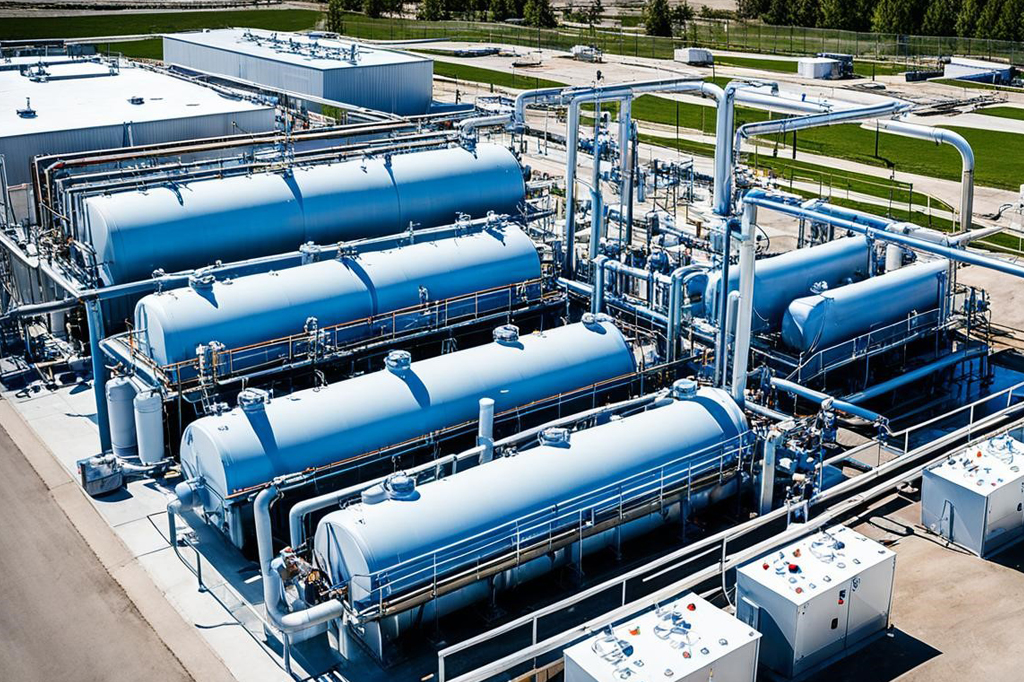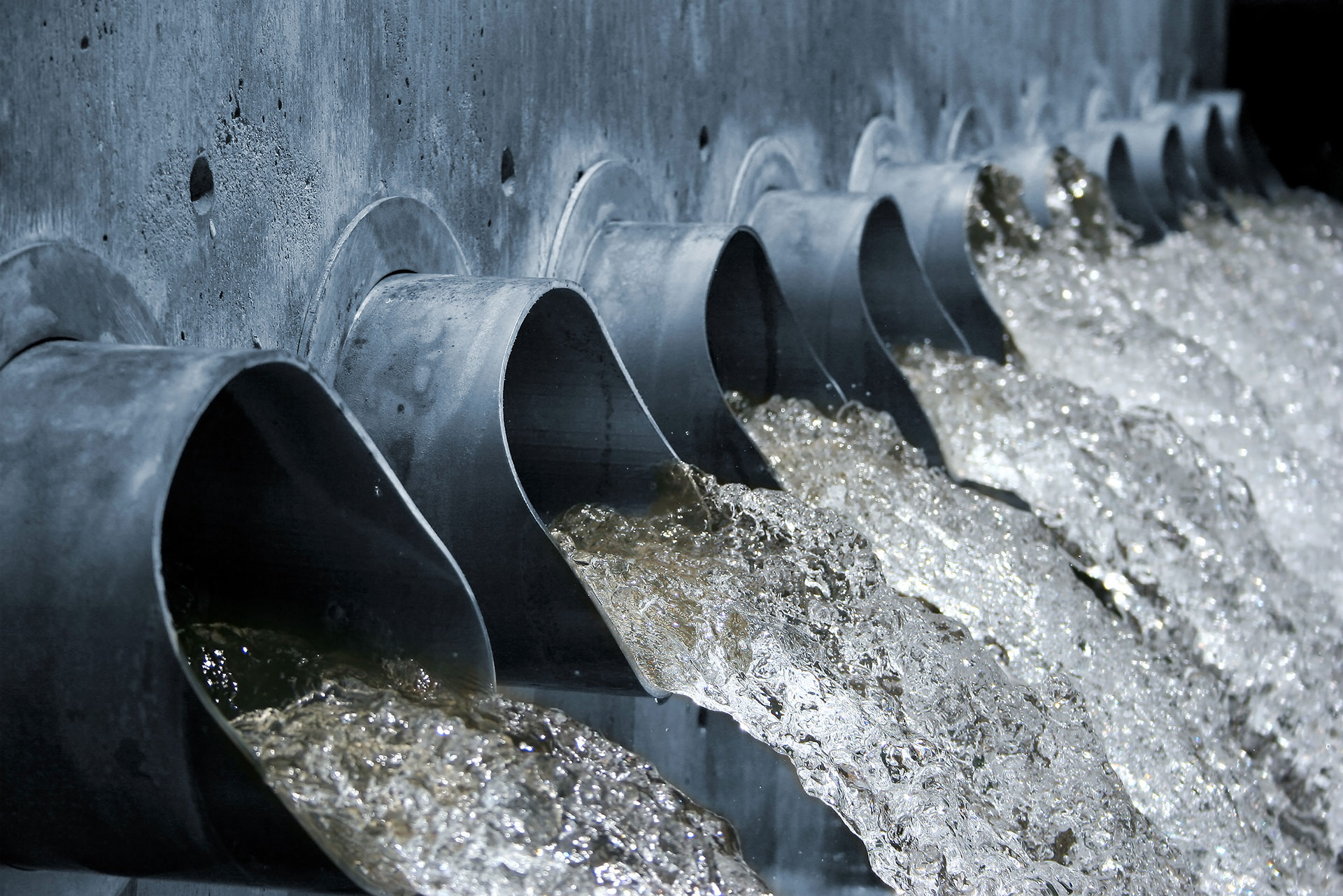Industrial Waste Water Treatment-- Advanced Solutions for Cleaner Effluents
Industrial Waste Water Treatment-- Advanced Solutions for Cleaner Effluents
Blog Article
Trick Techniques in Hazardous Waste Water Therapy Procedures
The therapy of industrial wastewater is an important facet of environmental administration, involving a variety of strategies created to alleviate the influence of contaminants. From the essential physical approaches that divide solids to the sophisticated chemical and organic procedures that target specific contaminants, each strategy plays a crucial duty in accomplishing water quality requirements. Advancements in innovations such as membrane layer purification and progressed oxidation procedures use cutting-edge solutions for boosting treatment effectiveness. Comprehending exactly how these techniques interconnect and their implications for sustainability raises vital concerns about the future of wastewater monitoring in industry.
Physical Treatment Methods
Exactly how effectively can physical treatment techniques deal with the intricacies of industrial wastewater? Physical treatment techniques play an essential duty in the initial stages of wastewater management, focusing mostly on the removal of solids and big particulates. Strategies such as flotation, purification, and sedimentation are vital for decreasing the focus of suspended solids, thereby enhancing the effectiveness of subsequent treatment processes.
Sedimentation involves the gravitational settling of solids, enabling for the separation of much heavier materials from the wastewater. This method is specifically effective in clarifying water prior to organic or chemical therapies.
In addition, flotation protection methods, which utilize air bubbles to raise suspended solids to the surface area for elimination, are reliable in dealing with wastewater with high focus of fats, oils, and oils. Overall, physical treatment approaches serve as an important primary step in the extensive administration of industrial wastewater, ensuring that the lots on subsequent therapy stages is minimized and improving general therapy effectiveness.
Chemical Therapy Techniques
While physical therapy techniques prepared for efficient wastewater monitoring, chemical treatment methods are essential for dealing with the extra complex pollutants often discovered in industrial effluents. These approaches make use of various chemical agents to precipitate, counteract, or oxidize hazardous materials, ensuring a more extensive elimination of contaminants.
One common technique is coagulation and flocculation, where chemical coagulants such as light weight aluminum sulfate or ferric chloride are included in advertise the gathering of put on hold bits. This process enhances solid-liquid splitting up, lowering turbidity and boosting water top quality. In addition, neutralization procedures are used to adjust the pH of wastewater, making use of acids or bases to reduce the effects of acidic or alkaline streams, respectively.
Oxidation-reduction responses play an important role in derogatory natural impurities and virus. Chemical oxidants like hydrogen, chlorine, or ozone peroxide are utilized to damage down complex organic compounds, making them less unsafe or a lot more biodegradable. Moreover, advanced oxidation processes (AOPs) combine numerous oxidation techniques to boost toxin removal performance.
Biological Therapy Procedures
The performance of wastewater therapy is considerably enhanced by organic therapy procedures, which harness the natural metabolic activities of microorganisms to decay raw material and remove pollutants. Industrial Waste Water Treatment. These processes largely involve anaerobic and cardio digestion, each customized for certain sorts of wastewater
Aerobic therapy processes make use of oxygen to support microbial development, advertising the breakdown of natural toxins right into carbon dioxide and water. Usual approaches consist of turned on sludge systems, where oygenation containers promote the blending of wastewater with microbes, and flowing filters, which encourage biofilm development on media surfaces.
Conversely, anaerobic treatment processes happen in the lack of oxygen, using anaerobic bacteria to you could try these out decompose natural matter, leading to biogas manufacturing, a renewable resource source. Anaerobic digesters are usually used in commercial setups for this purpose, efficiently minimizing the quantity i was reading this of sludge while producing important biogas.
The option of a biological treatment method depends on wastewater qualities, therapy objectives, and governing standards. The assimilation of biological processes in wastewater therapy not only enhances pollutant removal effectiveness but also promotes sustainability by minimizing chemical use and supporting resource recuperation.
Advanced Oxidation Processes

Usual AOP strategies include Fenton's reagent, photocatalysis, and ozonation. Fenton's reagent, a mix of hydrogen peroxide and ferrous iron, militarizes the development of hydroxyl radicals, making it effective for dealing with wastewater consisting of phenolic compounds and various other recalcitrant materials.
AOPs provide numerous advantages, consisting of lowered sludge production and the capability to treat wastewater with high concentrations of organic contaminants. The execution of AOPs calls for cautious factor to consider of operational criteria and cost-effectiveness, making certain that these advanced techniques are properly incorporated into existing wastewater treatment systems.
Membrane Filtering Technologies

Microfiltration works for removing suspended microorganisms and solids, while ultrafiltration targets smaller sized organic molecules and viruses. Nanofiltration links the void between ultrafiltration and reverse osmosis, properly removing organic substances and divalent ions. Reverse osmosis offers the greatest degree of purification, made use of mainly for desalination and removing mono-valent ions.
Membrane layer modern technologies provide numerous benefits, including reduced energy consumption contrasted to conventional treatment techniques, modular layout for scalability, and the potential for water recuperation and reuse. However, challenges such as membrane fouling and the requirement for regular upkeep need to be addressed to guarantee system effectiveness. In general, membrane filtration innovations represent a vital element of contemporary industrial wastewater therapy strategies, advertising sustainability and resource preservation in water management.
Verdict
In verdict, commercial wastewater treatment employs a varied selection of strategies, including physical, chemical, biological, and progressed methods. Proceeded developments in these approaches will certainly further enhance the performance and performance of wastewater treatment procedures in industrial setups.
The therapy of commercial wastewater is a crucial aspect of environmental monitoring, including a variety of methods developed to mitigate the influence of contaminants.Just how successfully can physical therapy approaches attend to the complexities of commercial wastewater?Advanced oxidation processes (AOPs) represent a cutting-edge method in industrial wastewater treatment, made to effectively degrade organic toxins that are commonly immune to standard treatment techniques (Industrial Waste Water Treatment).In verdict, industrial wastewater therapy uses a diverse variety of methods, including physical, chemical, organic, and advanced methods. Proceeded developments in these approaches will certainly additionally improve the efficiency and performance of wastewater therapy procedures in commercial settings
Report this page